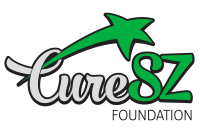
סטיבן ראש, MD, פרופסור חבר לפסיכיאטריה קלינית
על פי המכונים הלאומיים לבריאות הנפש (NIMH) בשנת 2017, 10.6 מיליון מבוגרים בארצות הברית חוו מחשבות רציניות על התאבדות, 2.8 מיליון תכננו התאבדות, 1.3 מיליון ניסו להתאבד ו-47,173 מתו כתוצאה מהתאבדות. ארגון הבריאות העולמי מעריך כי מיליון איש ברחבי העולם מתאבדים מדי שנה בקצב של 3 אנשים כל 2 דקות.
מוות כתוצאה מהתאבדות בקרב אנשים עם סכיזופרניה מתרחש בשיעור גבוה בהרבה מזה של האוכלוסייה הכללית, לעיתים מדווח על 13,000 לכל 100,000 אנשים עם הפרעה זו, בהשוואה ל-13 לכל 100,000 באוכלוסייה הכללית. זוהי הסיבה העיקרית למוות בטרם עת באוכלוסייה זו. הסיכון למוות כתוצאה מהתאבדות הוא הגבוה ביותר בשנתיים הראשונות לאחר הופעת הסכיזופרניה, והוא מופיע בתדירות גבוהה יותר אצל גברים, אלו עם דיכאון והפרעות שימוש בחומרים נלוות, ואלו עם היסטוריה של ניסיונות התאבדות. לעתים קרובות, מוקד הטיפול בסכיזופרניה הוא הפחתה בהזיות ובמחשבות שווא, אך ברור שחלק חשוב מכל תוכנית טיפול כרוך באסטרטגיות למניעת התאבדות.
מניעת התאבדות בסכיזופרניה דורשת שבירת מחסומים סביב הסטיגמה של מחלת נפש והבאת דיונים בנושא זה לאור, בין אם עם רופאים, בני משפחה או קבוצות תמיכה. זוהי משימה מאתגרת בהתחשב בסטיגמה שכבר קיימת, אפילו בקרב אלו שנפגעו מהפרעת מוח זו. דווח כי רוב האנשים המתאבדים נותנים אזהרות ברורות לגבי כוונותיהם ולעתים קרובות עושים זאת בזמן רב לפני ניסיון ההתאבדות. בנוסף, רוב האנשים המתאבדים הם אמביוולנטיים לגבי המוות. זה סותר את הסטיגמה שהתאבדות מתרחשת אצל אנשים שמעולם לא דנים בה, ללא אזהרה, ומתכוונים לסיים את חייהם. הסיכון הגבוה להתאבדות בקרב אנשים עם סכיזופרניה מחייב אותנו לדון בנושא זה בגלוי, ללא משוא פנים וללא חשש מהשלכות שליליות. מודעות מוגברת למחשבות אובדניות קשורה, למעשה, להפחתת הסיכון להתאבדות מושלמת.
אסטרטגיות מניעה אוניברסליות חייבות לכלול הפצת מידע מדויק באמצעות כלי תקשורת והרחקת מידע לא מדויק ומוטה שדוחק לשוליים אנשים עם נטייה להתאבדות. גישה מוגבלת לאמצעי התאבדות קטלניים ביותר (כגון אקדחים) הוכחה כמפחיתה את שכיחות ההתאבדות ומחייבת, כחברה, אנו דוגלים בחוקים ותקנות המגנים על אזרחינו הפגיעים, גם לנוכח ביקורת נוקבת מצד הִתנַגְדוּת.
אסטרטגיות סלקטיביות חייבות להתמקד באלו הנמצאים בסיכון להתאבדות ולדרוש סינון רחב של אוכלוסיות אלו וקיום דיונים גלויים ופתוחים בנושא התאבדות. עלינו לחנך ולהכשיר את כל חברי החברה לנהל סוגיות של התאבדות באותו אופן שבו אנו משתמשים בהתערבויות כמו החייאה (CPR), טיפול ידוע לדום לב, עם חינוך הניתן במגזרים רבים בחברה, לא רק באנשי מקצוע בתחום הבריאות. דמיינו לעצמכם אילו העלאת המודעות להתאבדות נקבעת כדרישה באותו אופן שבו עיסוקים ופעילויות שונים דורשים הכשרה בהחייאה, ומה זה יכול לעשות כדי להפחית את מקרי ההתאבדות שבוצעו.
אסטרטגיות אישיות המערבות חולים עם סכיזופרניה חייבות לכלול מעורבות משפחתית, קהילה ורופא. יש לחנך פסיכיאטרים לגבי היתרונות הברורים של קלוזפין בהפחתת הסיכון להתאבדות בסובלים מסכיזופרניה (Meltzer et al, 2003), שכן מחקרים מראים שטיפול זה אינו בשימוש נרחב. שיתוף פעולה קהילתי, שבו צוותים רב-תחומיים זמינים כדי לספק מגוון תמיכה לאלו עם סכיזופרניה, כגון טיפול בקהילה אסרטיבית (ACT) צריך להיות טיפול סטנדרטי ונגיש יותר לכל מגזרי החברה. חינוך משפחתי, אימון מיומנויות חברתיות וטיפולים התנהגותיים קוגניטיביים, אילו הם נגישים בקלות לכל המטופלים, ללא קשר לביטוח וליכולת לשלם, ישפיעו באופן דומה על מניעת התאבדות.
לסיכום, עלינו, כחברה, להכיר בסיכון הגבוה להתאבדות בקרב אלו בקהילות שלנו החיים עם סכיזופרניה כצעד ראשון לקראת מניעה. עלינו להפחית את הסטיגמה סביב הפרעה מוחית זו והתאבדות ולהיות מודעים לגורמי סיכון. עלינו לתמוך בחקיקה וברפורמה בבריאות. אולי יותר מכל, עלינו לפעול כקהילה כדי להקיף את הכת הזו באוכלוסייתנו בתמיכה ולהגביר את הגישה לטיפול יעיל.
הפניות
איגוד שירותי בריאות הנפש בזמן אשפוז לבני נוער לאחר אשפוז פסיכיאטרי עם סיכון למוות בהתאבדות. Fontanella et al; JAMA Netw Open. 2020;3(8):e2012887.
טיפול קלוזפין לאובדנות בסכיזופרניה: ניסוי בינלאומי למניעת אובדנות (InterSePT). מלצר ואח'; קבוצת המחקר הבינלאומית למניעת התאבדות. Arch Gen Psychiatry. 2003. ינואר;60(1):82-91
מנבאים של התאבדות בזמן האבחון בהפרעת ספקטרום סכיזופרניה: מחקר כולל של 20 שנה באונטריו, קנדה. Zaheer et al (בעיתונות); Schizophres. https://doi.org/10.1016/j.schres.2020.04.025
מניעת התאבדות. Sher, L. QJM. 2004. אוקטובר;97(10): 677-680.
מודעות להפרעה ולסיכון התאבדות בטיפול בסכיזופרניה: תוצאות הניסוי הבינלאומי למניעת התאבדות. Bourgeois M et al. אמ. ג'יי פסיכיאטריה. 2004. 161:1494-1496
ניהול סיכון התאבדות בחולים עם סכיזופרניה. Kasckow J, Felmet K and Zisook S. CNS Drugs. 2011;25(2): 129-143
הִתאַבְּדוּת. (2020, ספטמבר). אוחזר מאתר https://www.nimh.nih.gov/health/statistics/suicide.shtml#part_154969

